Homelessness and Universal Credit: research report
A range of literature indicates that various features of Universal Credit can result in homelessness and a number of correlations between homelessness and Universal Credit can be observed in the data.
2. Overview
This report investigates the links between Universal Credit (UC) and homelessness. It follows from two reports on housing and social security published by the Scottish Government in May 2018 and January 2020 respectively.[1] The report focuses on two aspects of UC which have been highlighted as being particularly detrimental, namely benefit sanctions and the five-week wait for the first payment.
UC has been rolled out gradually from 2013 to replace six working-age benefits ('legacy benefits').[2] Since the transition is mainly achieved by enrolling new benefit claimants onto UC, the Covid-19 pandemic has led to an historic rise in the UC caseload, as shown in Figure 1. In January 2020 there were around 240,000 people on UC in Scotland; by January 2021 this number had almost doubled to 480,000. In addition, significant numbers remain on legacy benefits, although these numbers have naturally decreased since 2013.
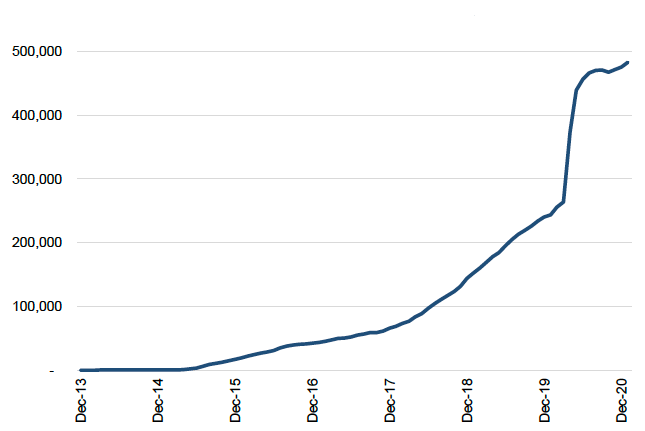
Source: DWP, Stat-Xplore
Homelessness rates in Scotland decreased from 833 people per 100,000 in 2010/11 to 532 per 100,000 in 2015/16, as shown in Figure 2. In part, this likely reflects the introduction of Housing Options services in Local Authorities in 2010.[3]Since then, the number has climbed slightly, to 573 per 100,000 in 2019/20, the latest year of data. This increase roughly coincides with the introduction of UC which began in 2013, despite headline economic indicators such as GDP and unemployment broadly improving over the time period, along with the supply of affordable housing.[4]
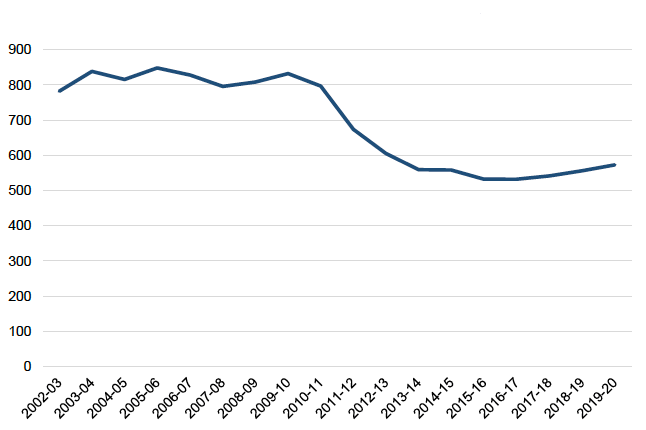
Source: Scottish Government, August 2020, Homelessness in Scotland: 2019-20
While it is not possible to draw conclusions from these high-level statistics, evidence from charities and other organisations indicates that there is in fact a link between UC and homelessness. The most direct way that UC can contribute to homelessness is by increasing rent arrears and ultimately evictions.[5] There is also evidence that various aspects of UC contribute to relationship issues and mental and physical health problems, which are in turn associated with homelessness.[6] For example, a quasi-experimental study published in the Lancet found that the rollout of UC increased psychological distress over above the impact of legacy benefits.[7]
Figure 3 shows that rent arrears are not usually the main reason for making a homelessness application, although broader financial difficulties are often cited as an additional reason for failing to maintain accommodation as shown in Figure 4.[8] This reflects the rareness of evictions under rent arrears, relating in part to legal restrictions.[9] Relationship breakdown is a more common reason, while mental health issues are often cited as an additional reason for failing to maintain accommodation.
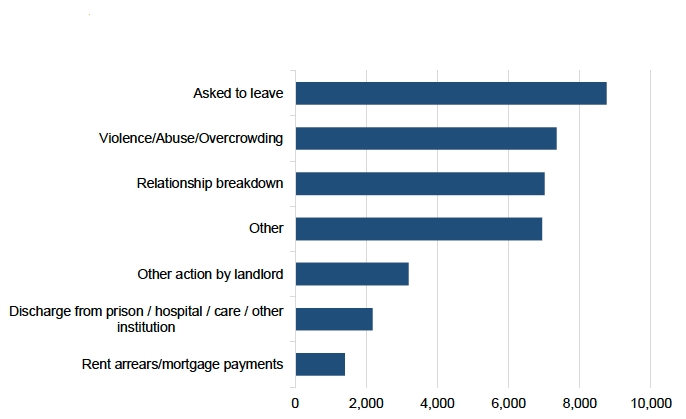
Source: Scottish Government, August 2020, Homelessness in Scotland: 2019-20
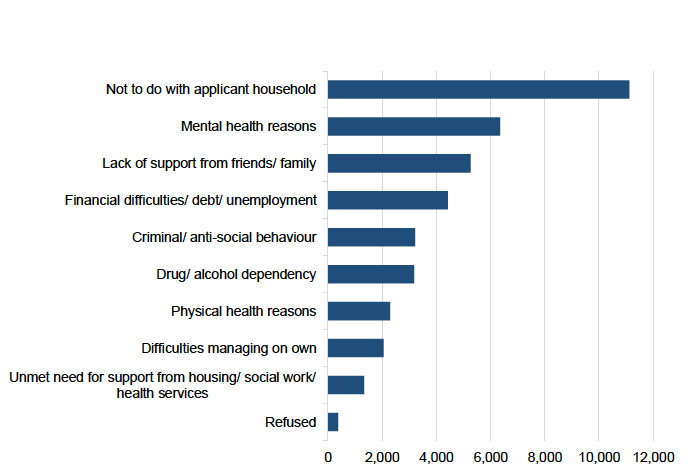
Source: Scottish Government, August 2020, Homelessness in Scotland: 2019-20
Mental health in particular has steadily increased in importance as a reason for homelessness since 2013/14 when Universal Credit was rolled, after falling over the previous five years. As shown in Figure 5, over 6,000 households cited this reason in 2019/20, compared to less than 2,000 in 2013/14.
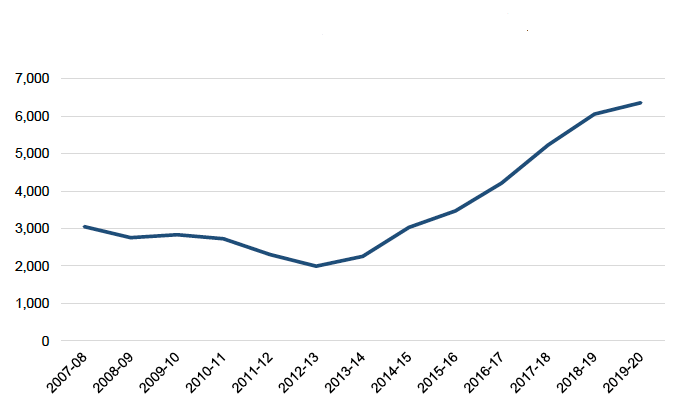
Source: Scottish Government, August 2020, Homelessness in Scotland: 2019-20
However, the causes of homelessness are complex and interrelated, making it difficult to isolate the channels through which UC affects homelessness. It is possible, for example, that insufficient UC payments push claimants into overcrowded accommodation, which along with violence and abuse is one of the most prevalent reasons for making a homelessness application.[10] Similarly, relationship and mental health issues could be associated with several of the other reasons cited for failing to maintain accommodation. There are also a range of background factors, such as poverty and deprivation, which are likely to place certain individuals at greater risk of homelessness while also determining the channels through which social security affects their situation.
Furthermore, different aspects of UC are likely to affect homelessness in different ways. In the remainder of this report, we focus on specific features of UC which have been highlighted in the literature as being particularly detrimental, namely sanctions and the five-week wait. We then consider a set of policies which are also relevant but which are mitigated in Scotland, namely Local Housing Allowance rates, the Benefit Cap, and the Bedroom Tax.
Contact
Email: spencer.thompson@gov.scot
There is a problem
Thanks for your feedback